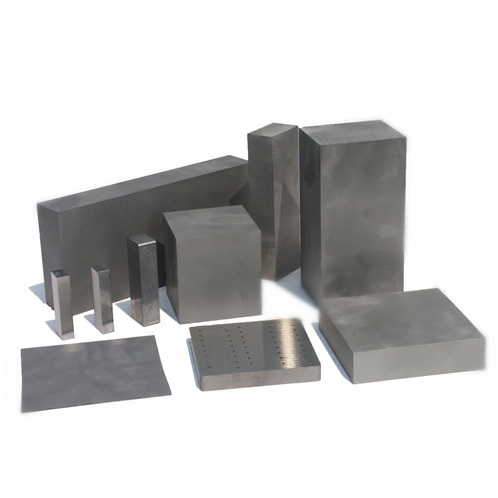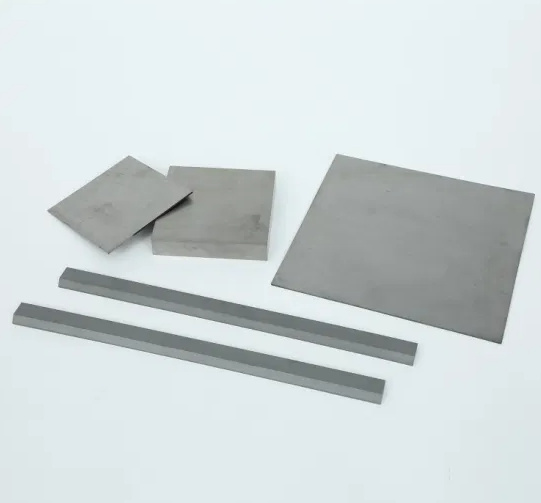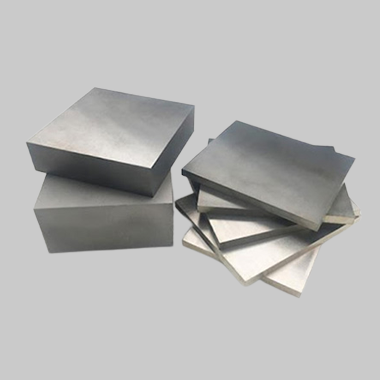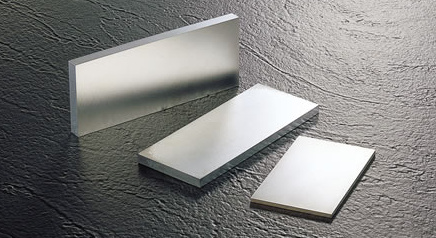Твердосплавные пластины являются неотъемлемыми компонентами в различных областях промышленности, начиная от режущих инструментов и заканчивая износостойкими поверхностями. Производство этих пластин представляет собой тщательный процесс, включающий ряд четко определенных этапов, обеспечивающих оптимальную производительность и долговечность. В этом подробном руководстве мы рассмотрим весь процесс производство твердосплавных пластин, Разбивая его на части шаг за шагом.
Подготовка сырья для производства твердосплавных пластин
Основой любой высококачественной твердосплавной пластины является ее сырье. Основными компонентами являются порошок карбида вольфрама и металлическое связующее, как правило, кобальт или никель. Чистота, размер частиц и распределение этих материалов играют важную роль в свойствах конечного продукта.
Почему подготовка имеет решающее значение?
Представьте, что вы пытаетесь испечь пирог из плохо просеянной муки - он просто не поднимется равномерно! Точно так же при изготовлении твердосплавных пластин сырье необходимо тщательно обрабатывать, чтобы добиться однородности и постоянства.
- Выбор карбида вольфрама: Сырой карбид вольфрама получают из руд или переработанных твердых сплавов. Его очищают, чтобы обеспечить соответствие строгим требованиям к чистоте.
- Переплет металлический: Высокочистый кобальт или никель выбирается в зависимости от требуемого применения. Кобальт повышает прочность, а никель обеспечивает лучшую коррозионную стойкость.
- Добавки: Для придания особых свойств, таких как износостойкость или термостойкость, могут быть добавлены незначительные элементы.

Смешивание и гранулирование при производстве твердосплавных пластин
После того как сырье готово, его смешивают и гранулируют для создания однородной смеси, которая обеспечивает однородность конечного продукта.
| Шаг | Описание |
|---|---|
| Смешивание | Порошки карбида вольфрама и связующего металла смешиваются в шаровых мельницах или аттриторах. Это обеспечивает равномерную дисперсию частиц. |
| Мокрое измельчение | Для предотвращения комкования и улучшения смешивания добавляется жидкая среда (например, этанол). |
| Грануляция | Влажную смесь сушат распылением, чтобы получить гранулы однородного размера. Такие гранулы обладают лучшей текучестью, что делает их пригодными для следующего этапа - компрессионного формования. |
Компрессионное формование Производство твердосплавных пластин
Теперь гранулированная смесь готова к прессованию в зеленый компакт - форму, напоминающую конечный продукт, но гораздо более прочную.
Процесс сжатия
Компрессионное формование сродни прессованию теста для печенья в форме. Оно придает материалу предварительную форму.
- Проектирование оснастки: Формы изготавливаются в соответствии с желаемыми размерами твердосплавных пластин.
- Высокое давление: Гидравлические прессы создают давление до нескольких тонн для уплотнения гранул. Давление обеспечивает сцепление гранул друг с другом и устраняет пустоты.
- Зеленая сила: После формовки компактный материал обладает достаточной прочностью, чтобы с ним можно было работать, но он все еще хрупок и нуждается в дальнейшей обработке.
Спекание твердосплавных пластин
Спекание - самый ответственный этап, на котором зеленый компакт превращается в плотную пластину твердого сплава.
| Параметр | Описание |
|---|---|
| Диапазон температур | Обычно от 1 300°C до 1 600°C. |
| Атмосфера | Проводится в вакууме или контролируемой среде для предотвращения окисления. |
| Продолжительность | Время спекания зависит от размера пластины, но часто составляет от нескольких часов до целого дня. |
| Образование жидкой фазы | Во время спекания связующий металл расплавляется и заполняет пустоты, образуя плотную, твердую структуру. |
Что происходит во время спекания?
Подумайте о спекании, как об обжиге керамики в печи. Высокие температуры не только упрочняют материал, но и скрепляют частицы на молекулярном уровне. При производстве твердосплавных пластин этот этап также выравнивает зернистую структуру материала, повышая его прочность и износостойкость.






Охлаждение и формовка при производстве твердосплавных пластин
После спекания твердосплавные пластины охлаждаются и извлекаются из форм. Этот шаг может показаться простым, но он необходим для сохранения целостности изделия.
| Шаг | Подробности |
|---|---|
| Контролируемое охлаждение | Пластины охлаждаются медленно, чтобы предотвратить тепловой удар, который может вызвать растрескивание. |
| Снятие с производства | Пластины аккуратно извлекаются из форм, чтобы не повредить поверхность. |
| Снятие остаточных напряжений | В некоторых случаях применяется дополнительная термообработка для снятия напряжений, возникающих при охлаждении или спекании. |
Постобработка Производство твердосплавных пластин
После охлаждения твердосплавные пластины проходят различные этапы последующей обработки для достижения требуемых размеров, качества поверхности и эксплуатационных характеристик.
Типичные этапы постобработки
- Шлифовка и полировка: Пластины отшлифованы до точных размеров и отполированы для гладкости.
- Покрытие (если применимо): На некоторые пластины наносятся дополнительные покрытия, например PVD (Physical Vapor Deposition), для повышения износостойкости.
- Удаление заусенцев: Все острые края и заусенцы удаляются для обеспечения безопасного обращения и применения.
Контроль и испытания при производстве твердосплавных пластин
Ни один производственный процесс не обходится без тщательной проверки качества. Инспекция гарантирует, что каждая твердосплавная пластина соответствует строгим промышленным стандартам.
| Тип испытания | Назначение |
|---|---|
| Точность размеров | Проверяет соответствие размеров пластины проектным спецификациям. |
| Испытание на твердость | Измеряет устойчивость к деформации, часто по шкале Роквелла или Виккерса. |
| Проверка плотности | Убедитесь в отсутствии пустот и пористости. |
| Износостойкость | Имитация реальных условий для проверки долговечности. |
| Ультразвуковой контроль | Обнаруживает внутренние дефекты или трещины. |

ЧАСТО ЗАДАВАЕМЫЕ ВОПРОСЫ
| Вопрос | Ответить |
|---|---|
| Какие материалы используются для изготовления твердосплавных пластин? | Основными компонентами являются порошок карбида вольфрама и металлическое связующее вещество, например, кобальт или никель. |
| Почему спекание так важно? | Спекание затвердевает, устраняет пустоты и скрепляет частицы, придавая материалу окончательную прочность и долговечность. |
| Как проверяется качество твердосплавных пластин? | С помощью таких тестов, как проверка размеров, измерение твердости и ультразвуковой контроль для выявления внутренних дефектов. |
| Можно ли изготовить твердосплавные пластины по индивидуальному заказу? | Да, они могут быть подобраны по размеру, толщине и даже составу материала в зависимости от конкретного применения. |
| В каких отраслях промышленности используются твердосплавные пластины? | Распространенные области применения - режущие инструменты, износостойкие поверхности, горнодобывающее оборудование и штампы высокого давления. |
Понимая каждый шаг производство твердосплавных пластин, Вы сможете оценить мастерство и точность, с которыми создаются эти промышленные рабочие лошадки. Если вы выбираете твердосплавные пластины для проекта или просто интересуетесь их производством, это руководство поможет вам принять взвешенное решение.

